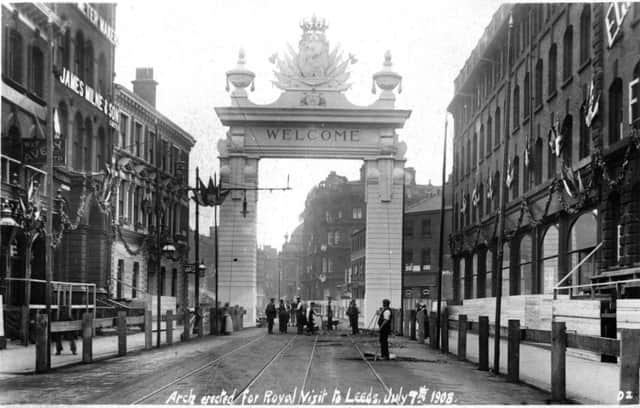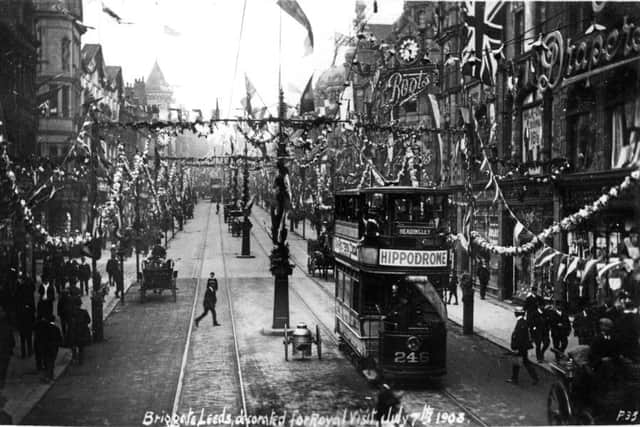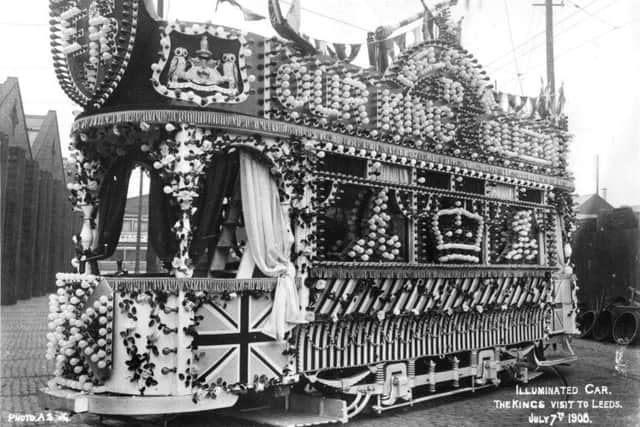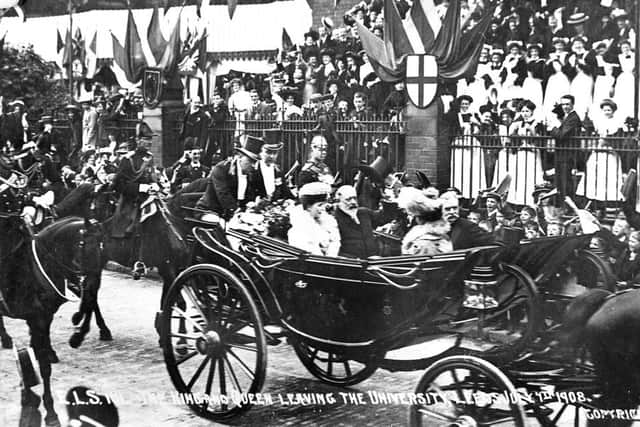How Leeds brought out the bunting for Edward VII


Succeeding to the throne in 1901, Edward launched himself into his new role as King with a vitality missing from the monarchy since the death of his father in 1861. Despite his controversial private life, the new King displayed personal charm with all classes, strongly condemned prejudice and pioneered Royal public appearances as we know them today.
The university was originally called the Yorkshire College of Science and later the Yorkshire College. Incorporating the Leeds School of Medicine (dating from 1831), the college became part of the federal Victoria University in 1887, along with Owens College (later Manchester University) and University College Liverpool (which became Liverpool University).
Advertisement
Hide AdAdvertisement
Hide AdAs Prince of Wales, he opened the college’s Edward Baines Memorial Wing in 1885. It was designed in a Gothic revival style by Sir Alfred Waterhouse (1830-1905). Nine years later his son and daughter-in-law, the Duke and Duchess of York, opened the Yorkshire College’s Library and Large Hall, also designed by Waterhouse.


On April 25, 1904, Edward signed a royal charter enabling the Yorkshire College to become a separate institution and gain university status, and so the University of Leeds was created.
Along with his wife Queen Alexandra and daughter Princess Victoria, King Edward and his entourage travelled from London’s King’s Cross, arriving at Leeds Central in less than three and half hours.
The Yorkshire Post said that never before had the city’s streets looked so festive. Bunting was flying or festooned and floral ornaments were everywhere. All along the line there were great crowds who cheered the royal train. The streets around the Central Station were densely crowded. The booking hall was decorated with plants, flags and bunting. Along the arrival platform a crimson carpet was laid, and this was continued through the booking hall to the carriages outside. Some 1,600 extra police poured into the city.
Advertisement
Hide AdAdvertisement
Hide AdFrom the station, the royal entourage passed through a colossal white arch in Wellington Street, across City Square, along Infirmary Street and East Parade to the Town Hall.


From windows, from house tops, from specially erected stands, from improvised seats on vehicles at street ends, from behind miles of barricades and open spaces, the huge throng shouted its delight.
Every part of the Town Hall was crowded with leading citizens, most of whom were in their places two hours before the Royal guests reached the city. Every aspect of public life – civic, military, educational, professional, and philanthropic – was represented at the gathering.
After the royal addresses and the corporation greeting, the King said in his speech: ‘The growth of the leather, of engineering, of clothing, wool, and worsted works has been continuous, and has rendered your city famous throughout the world.’ The King borrowed the sword of Sir Arthur Davidson, one of his equerries, and knighted the Mayor, Wilfred Hepton.
Advertisement
Hide AdAdvertisement
Hide AdA little later at the opening of the university’s new electrical engineering extension, speeches were made in a pavilion erected in the north quadrangle. The vice chancellor said in his address that, following the university’s 1904 royal incorporation, both the growth in student numbers and further buildings erected were proof that the King’s favours had not been bestowed in vain.


The new extensions were designed not only to provide better accommodation for literary and historical research but also to meet the ever growing needs of scientific study and applied science, such as electrical engineering and metallurgy.
In his reply the King said he greatly admired the buildings. He was particularly pleased by the facilities for the study, theory and practice of agriculture. He was convinced farmers could not achieve the best results unless they were properly instructed in the scientific aspects of their work.
In all parts of the world there were men holding responsible positions who had been educated at Leeds University.
A salute of 21 guns was fired by the West Riding (R.F.A.) Territorial Force on Woodhouse Moor.